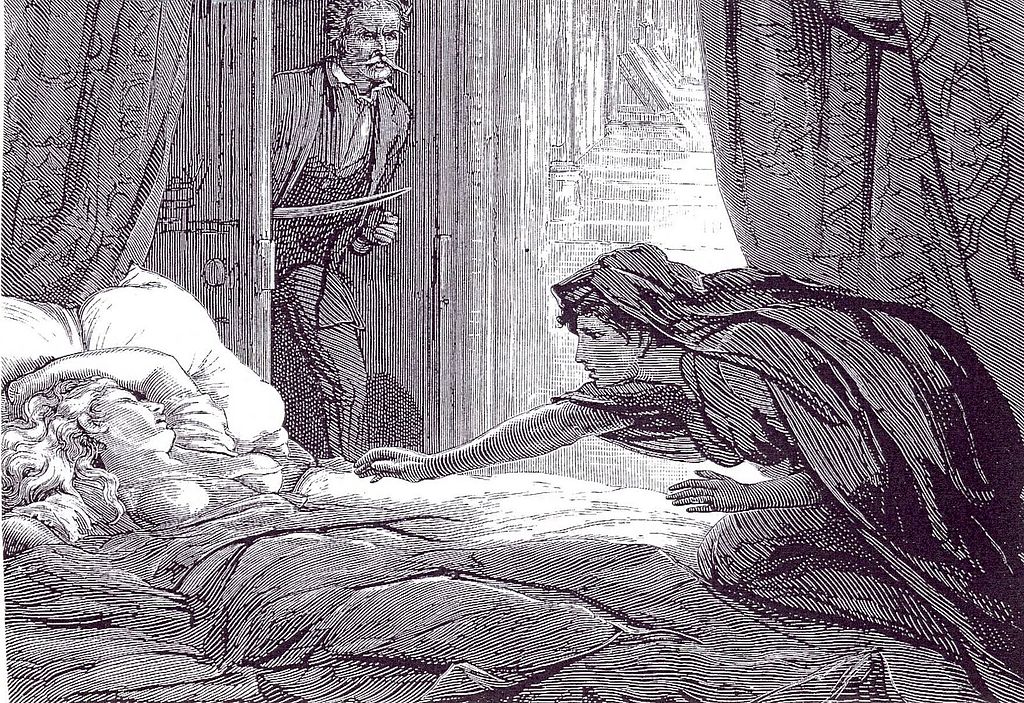
Le Giaour by Vernet
On Dec 12th 1408 Sigismund of Luxembourg, King of Hungary, founded the Societas Draconistarum (Order of the Dragon) one of the most evocative of the Military Chivalric Orders of the middle ages.
0
We are all familiar with the larger orders such as the Knights Templar, the Knights Hospitaller and the Teutonic Knights. The smaller chivalric orders are less well known, but abounded all across Europe. Spain and Portugal had many orders, the best known being the Knights of Calatrava. The Baltic States had a number of orders in the Northern Crusdades against the Pagans, with the Livonian Sword Brothers playing second fiddle to the Teutonic order.
0
Today we think of the Crusades as being particular to the holy land and nothing could be further from the truth. The Crusades represented a clash of cultures with Christian and Muslim states fighting for territory all across Europe.
0
The Iberian peninsula was the Western theatre. The remnants of the Christian Vizigothic kingdoms fought for control against the Caliphate and then against Rif muslims such as the Almoravids and the Almohads. The Reconquista culminated in 1492 when Ferdinand and Isabella took the Kingdom of Granada and unified Spain under Christian rule.
0
A second campaign was waged all across the mediterranean in places such as Algeria, Tunisia, Sicily, Malta, Crete, Cyprus, Rhodes etc to control the maritime trade routes. The key players on the Christian side were the Italian maritime states such as Genoa, Venice, Pisa, Amalfi, Ancona and Ragusa. The Ottoman fleet was the backbone of the muslim navies, but was ably supported by a variety of independent muslim rulers, traders and pirates. Two great battles signalled the ascent of Christian power; the Great Siege of Malta (1565) and the naval battle of Lepanto (1571). In both cases the Spanish Empire, freed of its own crusade, was able to contribute to Christian Victory.
0
On the Eastern Front the Christians fared less well. After capturing Jerusalem in the first crusade they established four ‘crusader kingdoms’ collectively known as Outremer; the Kingdom of Jerusalem, the Principality of Antioch, the County of Tripoli and the County of Edessa. They lost Edessa and Jerusalem to Saladin and then lost all the remaining land over the following years to Baybars, the Mameluke Sultan of Egypt. In 1453 Constantinople fell to the Ottoman Turks, who then flowed into Europe and the Balkans.
0
It was the Balkans that became the ‘front line’ of the crusades, the central theatre of the conflict. For Europe the most important single battle in the entire history of the Crusades was the Siege of Vienna in 1529. Under Sulieman the Magnificent the Ottoman Empire reached its high water mark. Had Vienna fallen then all of Eastern Europe could have become Muslim.
0
It is in the context of this world that we understand the order of the Dragon, a knightly order for selected nobility who vowed to defend the Christian world against the Turks. As noble knights they were expected to act as the leaders in the defence of Christian lands. It had members in Italy, Germany, Austria, Hungary and all across the Balkans. One of the more noted members of the order was Vlad II Dracul. The nickname ‘dracul’ was adopted when he was inducted into the order and means ‘Vlad the Dragon’.
0
After the assassination of Vlad Dracul his eldest son, Mircea, was blinded and buried alive. From the confusion that followed arose Vlad III who took a diminutive form of his father’s nickname and called himself ‘Dracula’. He was better known by his people as ‘Tepes’ or The Impaler, for his habit of impaling his muslim enemies. Dracula earned great fame and loyalty from the Romanians of Transylvania for his defence against the Turks.
0
Many years later, in the 1890’s Bram Stoker visited the town of Whitby in Yorkshire and was inspired by the gothic nature of the town to write a novel. A Dublin man, Stoker had taken a job as manager of the Lyceum Theatre in London. This gave him access to literary circles where he met Armin Vambery, a Hungarian Jew, traveler and author who was an expert on Ottoman Orientalism. It is undoubtedly from Vambery that Stoker learned of Dracula, and framed the central character of his famous novel. In many portrayals of the story the character of Armin Vambery serves as a model for Van Helsing.
0
The Giaour ; by Lord Byron
. . . Unquenched, unquenchable,
Around, within, thy heart shall dwell;
Nor ear can hear nor tongue can tell
The tortures of that inward hell!
But first, on earth as vampire sent,
Thy corse shall from its tomb be rent:
Then ghastly haunt thy native place,
And suck the blood of all thy race;
There from thy daughter, sister, wife,
At midnight drain the stream of life;
Yet loathe the banquet which perforce
Must feed thy livid living corse:
Thy victims ere they yet expire
Shall know the demon for their sire,
As cursing thee, thou cursing them,
Thy flowers are withered on the stem.
But one that for thy crime must fall,
The youngest, most beloved of all,
Shall bless thee with a father’s name —
That word shall wrap thy heart in flame!
Yet must thou end thy task, and mark
Her cheek’s last tinge, her eye’s last spark,
And the last glassy glance must view
Which freezes o’er its lifeless blue;
Then with unhallowed hand shalt tear
The tresses of her yellow hair,
Of which in life a lock when shorn
Affection’s fondest pledge was worn,
But now is borne away by thee,
Memorial of thine agony!





